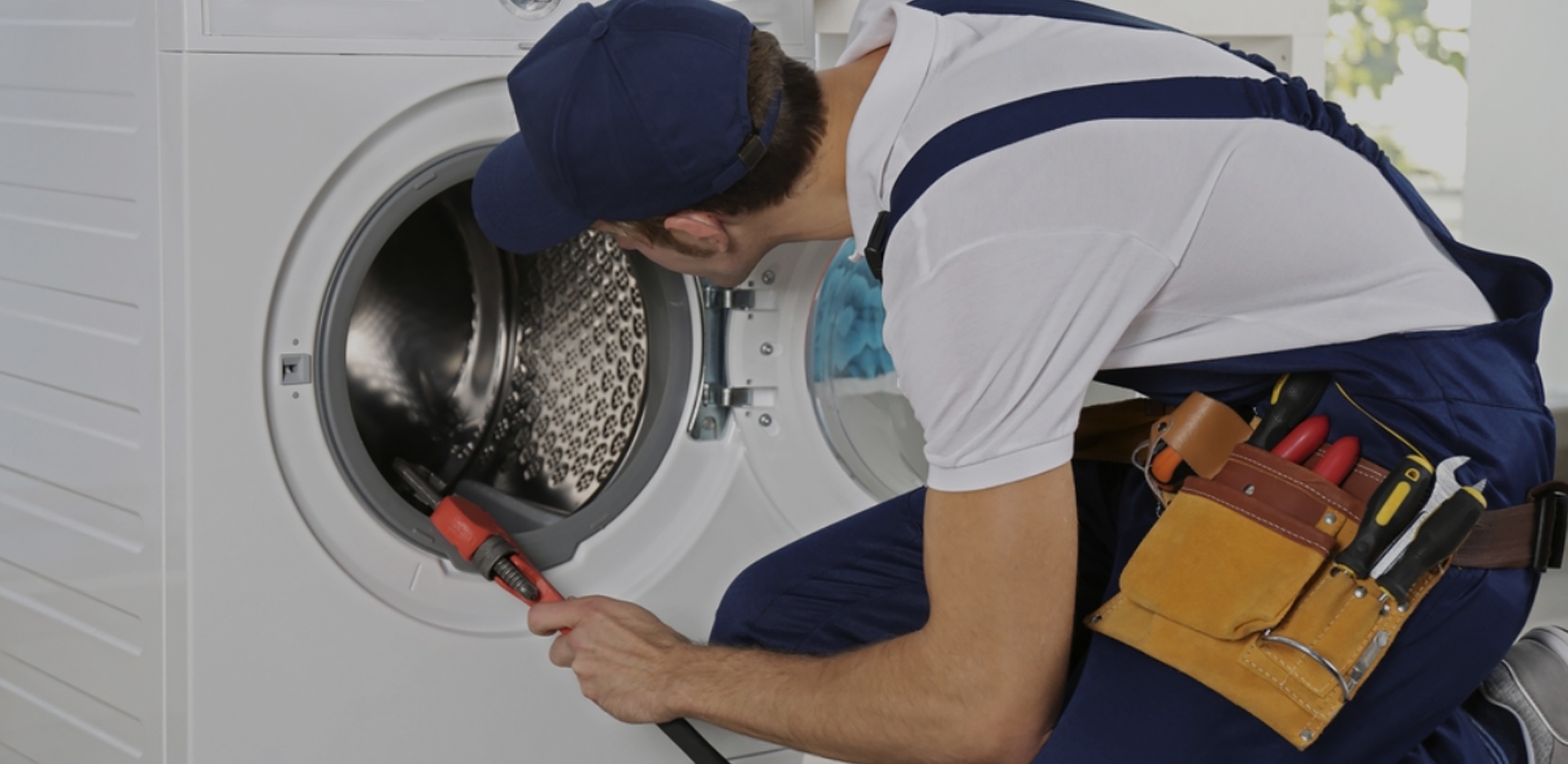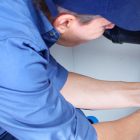If you’ve noticed leaks or unpleasant odors coming from your washing machine, it might be time to replace the washing machine door seal. The door seal, also known as the gasket, is an essential component that ensures water stays inside the machine during washes. Over time, this rubber seal can become damaged or worn, leading to inefficiencies and potential water damage. This guide will walk you through the steps to replace your washing machine door seal efficiently.
Contents
- 1 Understanding the Importance of a Washing Machine Door Seal
- 2 Signs That You Need to Replace Your Washing Machine Door Seal
- 3 Tools and Materials Needed for Replacing a Washing Machine Door Seal
- 4 Step-by-Step Guide to Replacing the Washing Machine Door Seal
- 5 Tips for Maintaining Your New Washing Machine Door Seal
- 6 When to Call a Professional
- 7 Conclusion
Understanding the Importance of a Washing Machine Door Seal
A washing machine door seal is crucial in keeping your appliance functioning properly. It prevents water from leaking out during a wash cycle and stops mold and mildew from building up inside the machine. If you notice water pooling around your washing machine or detect a musty odor, it’s likely that the door seal is compromised.
A worn-out washing machine door seal can cause several issues:
- Leaks: Water seeping out during wash cycles can damage flooring and create a slipping hazard.
- Odors: A damaged seal can trap moisture, leading to mold and mildew growth, which causes unpleasant smells.
- Inefficiency: Your washing machine may not perform optimally, resulting in longer drying times or ineffective cleaning.
Replacing a washing machine door seal might seem daunting, but it’s a manageable task with the right tools and guidance. Understanding why it’s important to replace it promptly can help you maintain the longevity and efficiency of your washing machine.
Signs That You Need to Replace Your Washing Machine Door Seal
Before diving into the replacement process, it’s important to identify whether your washing machine door seal truly needs replacing. Here are some common signs to look out for:
- Visible Damage: Inspect the seal for any visible cracks, tears, or deformations. These physical damages can lead to water leaks.
- Persistent Leaks: If you consistently find water around your washing machine, despite checking hoses and connections, the seal might be the culprit.
- Unpleasant Odors: A foul smell coming from your washing machine can indicate mold or mildew trapped in the door seal, often due to accumulated moisture.
- Inefficient Washing: Clothes might come out less clean if the seal isn’t properly holding water inside the drum, leading to inefficient washing cycles.
- Age of the Seal: Over time, seals naturally wear out. If your washing machine is several years old, it’s worth inspecting the seal as part of regular maintenance.
Recognizing these signs early can prevent further damage and help you decide when it’s time to replace your washing machine door seal. By addressing these issues promptly, you can ensure the continued efficiency of your washing machine.
Tools and Materials Needed for Replacing a Washing Machine Door Seal
Before starting the replacement process, gather the necessary tools and materials to ensure a smooth and efficient operation. Having everything ready will make the task quicker and less frustrating.
Essential Tools
- Screwdriver: Depending on your washing machine model, you may need a Phillips or flat-head screwdriver to remove screws holding the door seal in place.
- Needle-Nose Pliers: These are useful for removing and installing the retaining spring or wire that holds the seal.
- Lubricant: A small amount of dish soap or a specialized lubricant can help ease the new seal into place.
- Clean Cloth: For wiping away any dirt or mold from the area before installing the new seal.
- Bucket: To catch any excess water when you remove the old seal.
Replacement Materials
- New Door Seal: Ensure you have the correct replacement seal for your washing machine model. Check the model number and purchase the seal from a reliable supplier.
- Cleaning Solution: To clean the drum and surrounding areas before installing the new seal.
Step-by-Step Guide to Replacing the Washing Machine Door Seal

Once you have all your tools and materials ready, you can begin the process of replacing the washing machine door seal. Follow these steps to ensure a successful replacement:
Step 1: Turn Off the Power
Before starting any repair, ensure that your washing machine is turned off and unplugged from the power source. This is crucial for your safety during the process.
Step 2: Remove the Outer Seal Clamp
- Open the washing machine door and locate the seal.
- Use your needle-nose pliers to remove the clamp that holds the outer part of the seal. This is usually a spring or wire located around the door opening.
- Carefully peel the seal away from the door, taking note of how it’s positioned.
Step 3: Access the Inner Seal
- Depending on your machine, you may need to remove the front panel to access the inner seal. This might involve unscrewing parts of the machine to gain full access.
- Once exposed, locate the inner retaining clamp or wire.
Step 4: Remove the Old Seal
- Carefully remove the inner clamp using your pliers and gently pull the old seal away from the drum.
- Note the alignment and fit of the old seal, as this will help when positioning the new one.
Step 5: Clean the Area
- Before installing the new seal, clean the area around the drum and door opening. Use a cleaning solution to remove any mold, mildew, or detergent residue.
- Dry the area with a clean cloth to ensure a good fit for the new seal.
Installing the New Washing Machine Door Seal
With the area cleaned and prepared, it’s time to install the new washing machine door seal. This part requires patience and precision to ensure a proper fit.
Step 6: Fit the New Seal
- Begin by positioning the new seal around the drum, ensuring it fits snugly into the groove.
- Align any holes or markings with those on the machine to ensure proper placement.
- Gently work the seal into place, using a small amount of lubricant if necessary to ease it around the drum.
Step 7: Secure the Inner Seal
- Once the seal is properly positioned, reattach the inner retaining clamp or wire.
- Ensure the clamp is securely fastened to prevent the seal from coming loose during use.
Step 8: Reattach the Outer Seal
- Fit the outer part of the seal around the door opening.
- Secure it with the outer clamp, ensuring it’s tightly in place.
Step 9: Test the Seal
- Close the washing machine door and plug the machine back in.
- Run a short cycle without clothes to test for leaks. Observe the seal for any signs of water escaping.
Tips for Maintaining Your New Washing Machine Door Seal
To prolong the life of your new washing machine door seal and maintain the efficiency of your appliance, consider the following maintenance tips:
- Regular Cleaning: Wipe down the seal with a damp cloth after each use to remove moisture and prevent mold buildup.
- Leave the Door Open: Allow the washing machine door to remain slightly open when not in use to promote air circulation and reduce moisture retention.
- Use Appropriate Detergent: Use the recommended amount of detergent to prevent excessive residue that can lead to mold growth.
- Inspect Regularly: Periodically check the seal for any signs of wear or damage, addressing issues promptly to prevent leaks.
- Avoid Overloading: Overloading the washing machine can put extra pressure on the seal, leading to premature wear.
By following these tips, you can extend the life of your washing machine door seal and ensure your appliance runs smoothly for years to come.
When to Call a Professional
While replacing a washing machine door seal is generally a manageable task for most homeowners, there are times when calling a professional might be necessary:
- Complex Models: If your washing machine model is particularly complex or unfamiliar, it might be best to seek professional help to avoid damaging the machine.
- Persistent Issues: If leaks or odors persist after replacing the seal, a professional technician can diagnose and fix underlying issues.
- Warranty Concerns: If your washing machine is still under warranty, professional servicing might be required to maintain coverage.
For professional assistance, feel free to contact us at 0545354777. Our experienced technicians can help ensure your washing machine operates efficiently and effectively.
Conclusion
Replacing a washing machine door seal is a straightforward process that can significantly improve the performance and lifespan of your appliance. By following this guide and taking the time to perform regular maintenance, you can prevent leaks, odors, and inefficiencies in your washing machine. Remember, if you encounter any difficulties or persistent issues, professional help is just a phone call away at 0545354777. Keep your washing machine in top condition and enjoy cleaner clothes with a properly sealed door.



